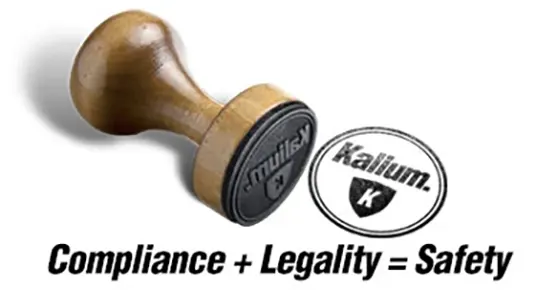IMDG Training for Shipping Dangerous Goods
International Maritime Dangerous Goods Code
Prerequisite: TDG Handler training
This training is suitable for any person handling, packaging and storing in accordance with the regulations on the transport of dangerous goods by sea as per the International Maritime Dangerous Goods Code (IMDG Code).
We cover the following topics:
- How to navigate through IMDG Code volumes 1&2
- Proper shipping names and safety marks
- Appropriate standardized containers
- Packing instructions
- Special provisions applicable
- Compliant shipping documents preparation
- Exemptions allowed to help limit costs
- Segregation of dangerous goods
We privilege enjoyable learning with the help of games and didactic material. Each participant will receive a training booklet for future reference and a training certificate in accordance with Transport Canada standards.


Summary and objectives of the training
Who is this training for?
This training is intended for people who have already taken IMDG training and who need to update their certification, since certification in the transport of dangerous goods by sea must be renewed every 3 years.
If you send dangerous goods by sea, even in small quantities, this training is mandatory. If you wonder about any of the following questions in the course of your work, IMDG training will allow you to be able to send compliant packages and avoid rejected and returned shipments. The shipment of a dangerous product by ship begins in the laboratory with a good classification and the choice of packaging.
- Are you able to properly classify your product for transport?
- Are you able to choose the right container?
- Do you know the packaging standards?
- Would you be able to recognize non-compliant packaging?
- Do you know how to fill out the appropriate documentation?
- Do you know the legal repercussions and dangers of a non-compliant shipment?
Do I need to have any prerequisites to take this course?
This training focuses on shipping hazardous materials by sea. You will learn how to prepare your packages so that they comply with the regulations in force and how to produce the necessary documents for these shipments. This is a refresher course, so you must have completed IMDG training in the past. This training will allow you to update yourself with the regulations.
Learning Objective
This training aims to support companies that must send their dangerous goods by sea according to the IMDG Code. Each participant will learn to master all the steps from classification to documentation for their shipments.
We will deal with the following topics:
- Classification according to the 9 classes
- Particularities of maritime transport
- How to find the information in the IMDG Code
- Packaging requirements
- Documentation Requirements
The training also includes practical exercises to make the learning a reality. Each participant will receive a training workbook for future reference and a training certificate.
Training outline
Module 1: Regulatory Context
Objective of the module: to be able to
- Understand everyone's responsibilities.
- Find information in regulations
- Understand the need for comprehensive classification.
1.1 Legal responsibilities of each of the TDGR actors
1.1.1 The shipper and importer, the carrier and the handler
1.1.2 Offences and Penalties
1.2 IMDG Code
1.2.1 Transport's Conditions
1.2.2 Regulatory structure
Module 2: Classification
Objective of the module: to be able to
- Understand the need for comprehensive classification.
- Know the particularities of maritime transport
- Understand the hazards associated with lithium batteries
- Understand the Dangerous Goods List
2.1 Classification
2.1.1 What is a dangerous good?
2.1.2 Definitions of classes 1 to 9
2.1.3 Lithium batteries (an introduction)
2.1.4 Marine pollutants
2.2 Dangerous Goods Numerical and Alphabetical Lists
2.3 Stowage and segregation
Module 3: Documentation
Objective of the module: to be able to
- Judge the conformity or not of a shipping document
- Write compliant shipping documents.
3.1 Shipper's declaration
3.1.1 Formats and requirements
3.2 Emergency Response Instructions
Module 4: Marking, Labelling and Packaging
Objective of the module: to be able to
- Judge the conformity of safety marks on a package
- Properly complete the marks and labelling of a package
- Recognize standardized packaging.
- Understand packing instructions.
- Choose the right packaging
4.1 Requirements for marking and labelling
4.2 Placards
4.3 Overpack
4.4 Characteristics of standardized packaging
4.4.1 Types and packaging codes
4.4.2 Requirements
4.4.3 Packaging groups
4.5 Packing instruction
4.5.1 Small packages
4.5.2 Large packaging
4.5.3 Bulk packaging
4.6 Load
4.7 Report
Module 5: Exemptions and Training
Objective of the module: to be able to
- Justify the need to be trained in the IMDG
- Properly apply limited and excepted quantity exemptions
- Synthesize regulations in real situations
5.1 Limited quantity exemption
5.2 Excepted quantity exemption
5.3 Training
5.4 Package Checklist
Frequently asked questions
What is the IMDG Refresher Training?
IMDG Training refers to specialized training that focuses on the International Maritime Dangerous Good (IMDG) Code. This code is a globally recognized regulation developed by the International Marine Organization (IMO), a specialized agency of the United Nation, to ensure the safe transportation of dangerous goods by sea. This helps prevent incidents, protect marine environments, and ensure the safety of crew members and vessels.
Who is eligible to take the IMDG Refresher course?
IMDG refresher training is for people who have already taken initial IMDG training in the past and need to be recertified. Any company shipping dangerous goods by sea must train its employees on the IMDG Code in order to comply with TDG and international regulations. This course is aimed at all personnel involved in the preparation, handling and shipping of dangerous goods by sea. For example, employees with the following functions will need to be trained: packaging, labeling, bill of lading preparation, loading, transportation.
How often do I need to renew my IMDG certification?
For maritime transport, the training certificate expires 36 months after issue. It is important to note that the certificate is not transferable from one company to another, so if you change jobs, you will have to take the training again with your new employer, even if the training is less than 3 years old, since the certificate must be signed by the employer.
What topics are covered in the IMDG Refresher Training?
IMDG Refresher training aims to ensure compliance with the International Maritime Regulations (IMDG Code). Topics covered include an introduction to the IMDG Code and its use; classification including marine pollutants; labeling and placarding; shipping documents, packaging; segregation; exemptions, special provisions and training requirements.
Is the IMDG Refresher Training available online or only on-site?
Training is available either at your workplace or via videoconference. In both cases, a qualified instructor will give the course and be on hand to answer any questions.
Will I receive a certificate upon completing the IMDG Refresher course?
Yes, you will receive a certificate containing the following information: the name and address of the employer's establishment, the employee's name, the expiry date of the training certificate and the aspects of handling, transport request or transport of dangerous goods for which the employee has received training.
What are the prerequisites for enrolling in the IMDG Refresher Training?
The IMDG refresher course is aimed at people who have already taken an initial IMDG course in the past and need to be recertified. Participants will already be familiar with the regulations.
How long does the IMDG Refresher Training take to complete?
IMDG Refresher training lasts 7 hours. It includes practical exercises for each of the modules covered, to ensure that learning is fully integrated. The training also concludes with a knowledge assessment to ensure that all participants will be able to handle, request transport or carry dangerous goods.
What are the legal requirements for shipping dangerous goods by sea?
Shipping dangerous goods by sea is highly regulated due to the inherent risks involved. The primary international legal framework is the International Maritime Dangerous Goods (IMDG) Code, which is made mandatory by the International Convention for the Safety of Life at Sea (SOLAS). While the IMDG Code is the global standard, national regulations in Canada and the United States (and other countries) incorporate or reference the IMDG Code, making compliance with it a domestic legal requirement for international sea shipments. Therefore, the fundamental legal requirement for shipping dangerous goods by sea is strict adherence to the IMDG Code. This compliance is then enforced through national legislation in the countries of origin and destination, such as the TDG Regulations in Canada and the 49 CFR in the United States. Therefore, anyone involved in this process must receive comprehensive IMDG training and continually update their knowledge to ensure full compliance and prevent severe legal consequences.
How can I register for the IMDG Refresher Training course?
You can contact us through our "Contact an expert!" boxes on the various pages of our website, or by calling 450 906-6999.

Design, programming and hosting by VisionW3.com


